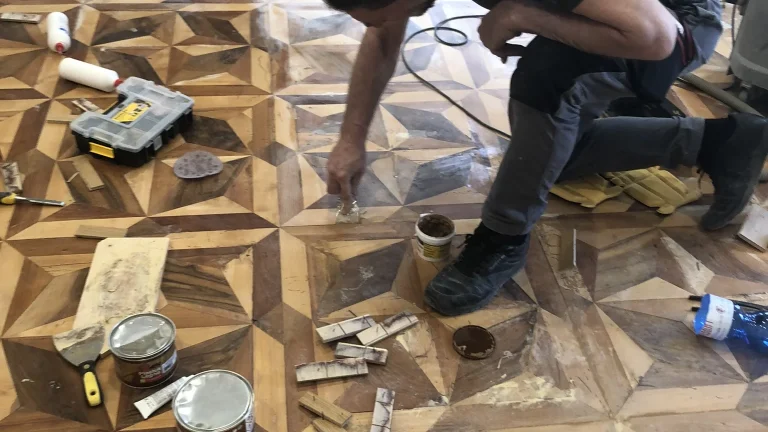Let the pre-existing elements tell the story of the place
Renovation of the original floors
In this project, the most significant work is undoubtedly the renovation of the original floors.
Our parquet specialists restored the multi-wood square panels whose geometric patterns varied from room to room. To bring the floor back to its former glory, they injected specific resins and foams, which allowed them to stabilize the planks and eliminate the creaking typical of old parquet floors.
The damaged or missing surface woods were carefully replaced with similar woods recovered from other parts of the house or from our stock.
The process then moved on to sanding with light mechanical tools and hand filling using a mixture of milling dust and resin. This was followed by additional sanding, and the work was completed with a satin finish.
In the hallway, we could not trace the original wood, which had been replaced with laminate. In this case, we installed a click-fit prefinished floor chosen by the clients.
Doors and stoves
Also, to enhance the existing elements, we restored the internal doors in the apartment, bringing them back to life. Where this was not possible, we installed external sliding glass doors by Henry Glass.
Another special feature already present were the majolica stoves, which were used in the past to heat the rooms. Their historical and aesthetic value convinced the owners to keep them as decorative elements.
Bathroom and cloister
In the office, we renovated the bathroom and the antechamber with a more modern aesthetic, so that these spaces would align with the style of the office, whose furnishings were chosen by the clients.
What makes the spaces of this project even more beautiful is the large internal cloister with green plants and the terrace overlooking Via Roma.























